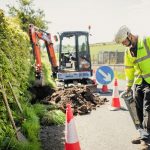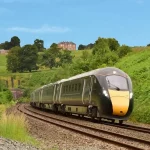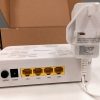Update on Openreach G.fast, FoD, SoGEA and FTTP Broadband Changes
We’ve today gathered together the latest information from our UK industry sources in order to produce a summary of the latest broadband ISP technology and service changes at Openreach (BT). On the list this time are new FTTC cabinets, the G.fast self install trial, SoGEA, FTTP on Demand (FoD) and more.
We’ll kick things off with some smaller developments. Firstly, Openreach have a new Huawei centric upgrade for their existing (FO1H200) FTTC broadband street cabinets that essentially turns a 288 line (ports) cabinet into one that can handle 512 lines (preferable to building a 2nd DSLAM cab when adding capacity). Previously they could upgrade these to 384 ports (here).
By the looks of it they can also use this and a “side pod” (H100E) extension (similar to how G.fast is done) to turn an ECI 256 line cabinet into a Huawei 512 line one (mixes ECI and Huawei kit). We understand that Openreach will add capacity via a variety of different approaches to around 33,000 cabinets in the year.
Advertisement
Elsewhere their “Fibre First” roll-out of Fibre-to-the-Premises (FTTP) ultrafast broadband is currently in the process of looking to target social housing via local projects, which is something that both Hyperoptic and Community Fibre are also doing (usually through agreements with local councils). Details remain sparse but we’d expect Openreach to follow a similar approach.
Now on to other things..
End of Life for WLR (Old Phone Services)
Progress is being made on the plan to retire old PSTN / Wholesale Line Rental (phone) services by 2025 (excluding fully unbundled MPF lines), which will see Openreach stop selling voice services and deliver an all-IP network (original news). By the sounds of it they’ll now stop selling these to ISPs from 2023, with a “forced migration” process then expected to start from April 2025 (likely to annoy some older landline-only customers) ahead of complete withdrawal by December 2025.
At present this means that consumers will need to adopt VoIP (e.g. plug your phone into the back of a broadband router and / or Analogue Telephony Adapter (ATA)). As previously reported those people who live outside of a fibre (FTTC/P/G.fast) or MPF (fully unbundled ISP lines) area will be offered a special Single Order Transitional Access Product (SOTAP) to help. Big challenges remain with this so it’s one to watch in future years.
Advertisement
G.fast Self Install Trial
At the end of 2018 we reported that Openreach were set to start trials of a self install solution for G.fast broadband in January 2019 (involving approximately 1,000 lines), which is due to run for 3 months (here). At present you need an engineer visit to complete the service setup but it will obviously be cheaper if this can be removed.
The trial ended up starting a little later than expected on 4th February 2019 and it’s only being tested with those who can achieve a line speed consistently above 200Mbps. Supporting ISPs are also being asked to adopt a single router solution (i.e. supply the customer with a router that integrates the G.fast modem), which is a bit tricky given the lack of affordable G.fast supporting kit (BT does this via their Smart Hub X / 2 routers).
Interestingly it currently looks as if Openreach will now give this a full launch before the end of Spring (April to June period), although that assumes the trial feedback is positive.
Single Order Generic Ethernet Access (SOGEA)
The SOGEA service is a major change that’s designed to enable consumers to buy a standalone hybrid fibre FTTC (VDSL2) or G.fast (SoG.Fast) broadband line without the voice / phone service (don’t expect a big fall in price since adding voice is only a tiny part of the cost). At the end of 2018 we reported that this was now entering the final ISP pilot stage, which included the first tentative pricing (here).
Advertisement
The latest update suggests that this may get a formal launch just after Easter (April/May 2019 period), while the wonderfully named G.fast variant (SoG.Fast) will follow a slightly different path and may not enter Early Market Deployment (EMD) until a month or so after this. Full national coverage of SOGEA will then be achieved during the second half of 2019.
ISPs will be expected to sell a one box solution (i.e. router with integrated modem and most likely phone connectivity) alongside this service for obvious reasons (VoIP support).
Seamless Rate Adaption (SRA) Trial for FTTC Lines
As reported toward the end of 2018 (here), Openreach are gearing up to launch a large-scale trial of SRA technology on FTTC based “fibre broadband” lines. This enhancement could improve service stability by varying speed more effectively. We said last year that this was likely to involve around 100,000 lines and will probably run until around the start of Spring 2019.
The latest information we’ve had suggests that the phased roll-out actually began on 4th February 2019 and the technology is expected to be removed once the trial completes in late July 2019. At this point it’s still too early to say whether the upgrade will be fully deployed post-trial or if ECI cabinets will be included, although SRA is a fairly common feature on other similar networks and so hopefully it won’t cause too many problems.
National 21CN WBC Roll-Out
BT’s 21st Century Network (21CN) powered Wholesale Broadband Connect (WBC) platform, which is the foundation for a lot of modern internet connection services on their network (e.g. ADSL2+), is continuing toward its goal of complete national UK coverage (i.e. replacing the old 20CN services / exchanges) but it is now expected to take longer than thought.
The original target was to complete this by the end of 2018 and toward the end of last year we noted that 280 exchanges out of 5,500 were still left to do. This figure has now dropped to 174 exchanges and a further 40 sites should be completed by the end of March 2019, with another 31 following during the early spring.
The remaining batches of 103 sites are extremely challenging to upgrade in terms of cost and backhaul capacity. Some of these may not now be done until 2021, although it’s important to put this into some perspective because all of these sites combined only account for around 9,000 end users. We are clearly talking about some of the smallest and most challenging areas of their entire network.
Fibre on Demand (FTTPoD / FoD)
Last autumn Openreach confirmed that they had placed a “stop sell” on new orders of their FTTP on Demand ultrafast broadband product (here), which followed a spike in demand that strained their operational capacity. FoD is designed to be requested (“on demand“) in slower FTTC capable areas where Openreach’s pure fibre optic cables usually only go as far as your local street cabinet.
Essentially FoD enables you to get an ultrafast Fibre-to-the-Premises (FTTP) line built right to your property (e.g. business or home), even if FTTP wasn’t previously planned or natively deployed to your area. The big catch with this is that the end-user ends up having to stomach the often huge civil engineering costs for the service, which in some areas may stretch into the tens of thousands (i.e. it’s more intended for small business users).
The latest information we have is that FoD is already in the process of being restarted and new orders are being accepted, although the window for this is Dec 2018 to March 2019 so your mileage may vary. Meanwhile Openreach expect to be able to support 100 FoD orders per month from April 2019 (at present major clients like BT Wholesale are still limited 20).
The 100 figure may rise again toward early 2020 as more capacity is added.
Mark is a professional technology writer, IT consultant and computer engineer from Dorset (England), he also founded ISPreview in 1999 and enjoys analysing the latest telecoms and broadband developments. Find me on X (Twitter), Mastodon, Facebook, BlueSky, Threads.net and Linkedin.
« EU Agrees New Copyright Rules – Sends Internet to the Dark Ages UPDATE
Open Fibre Networks Grows UK FTTH Cover to 40,294 Premises »

















































Comments are closed